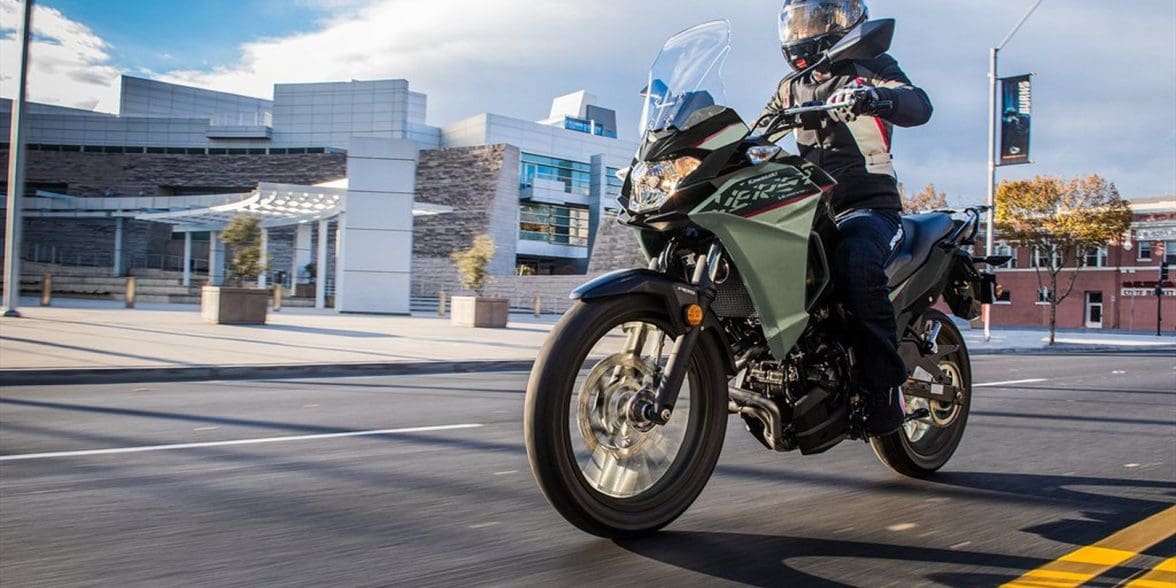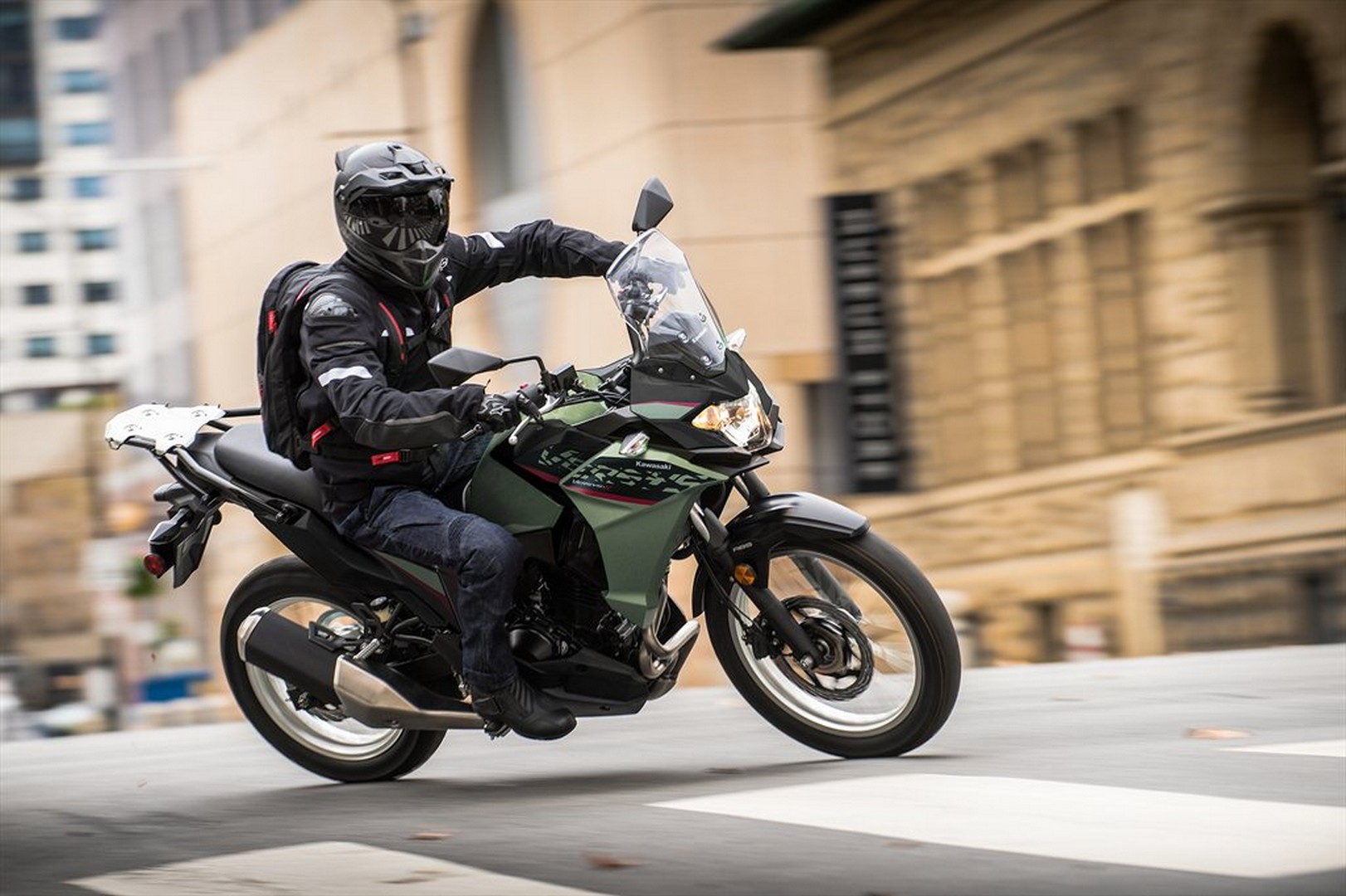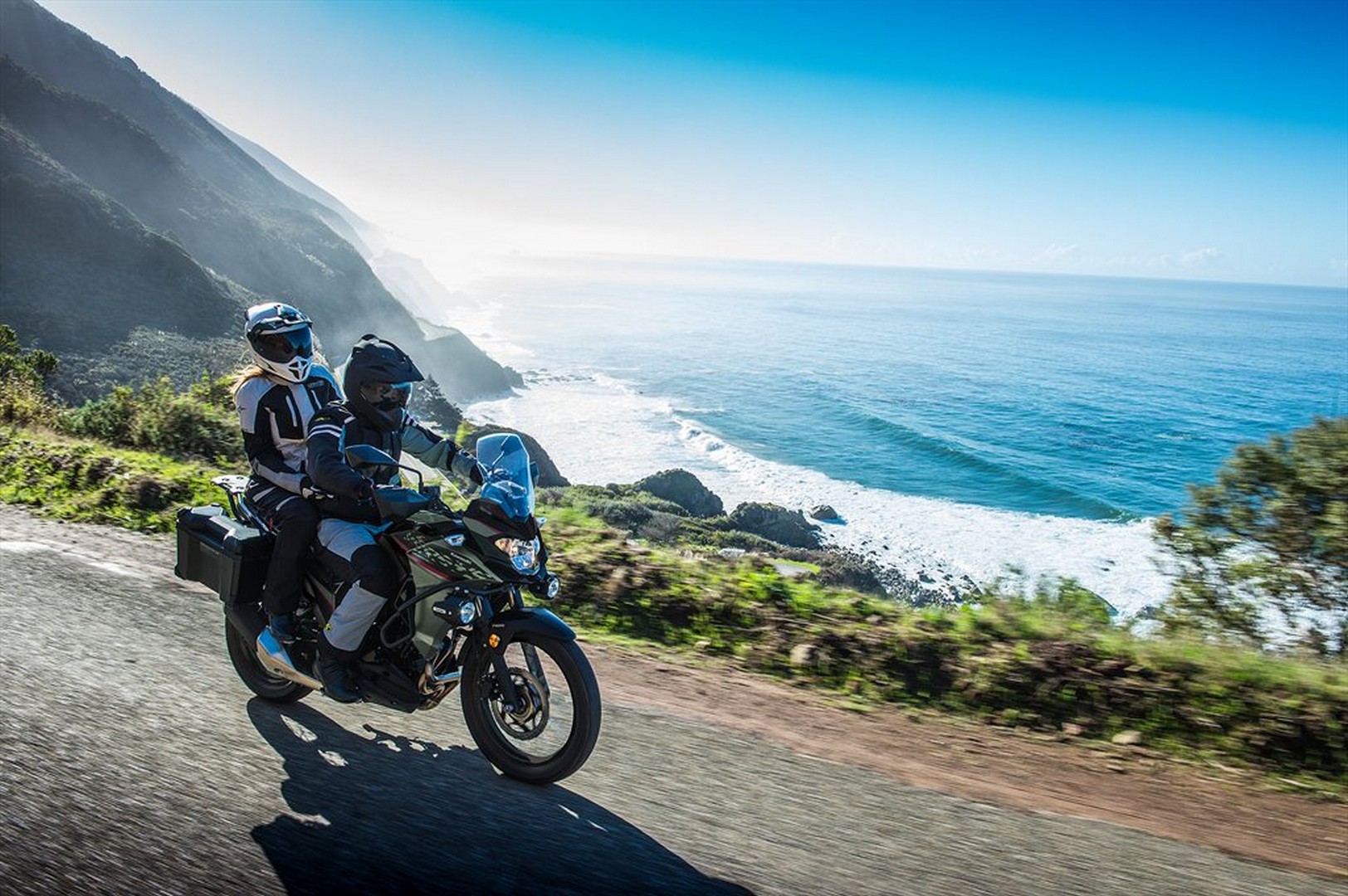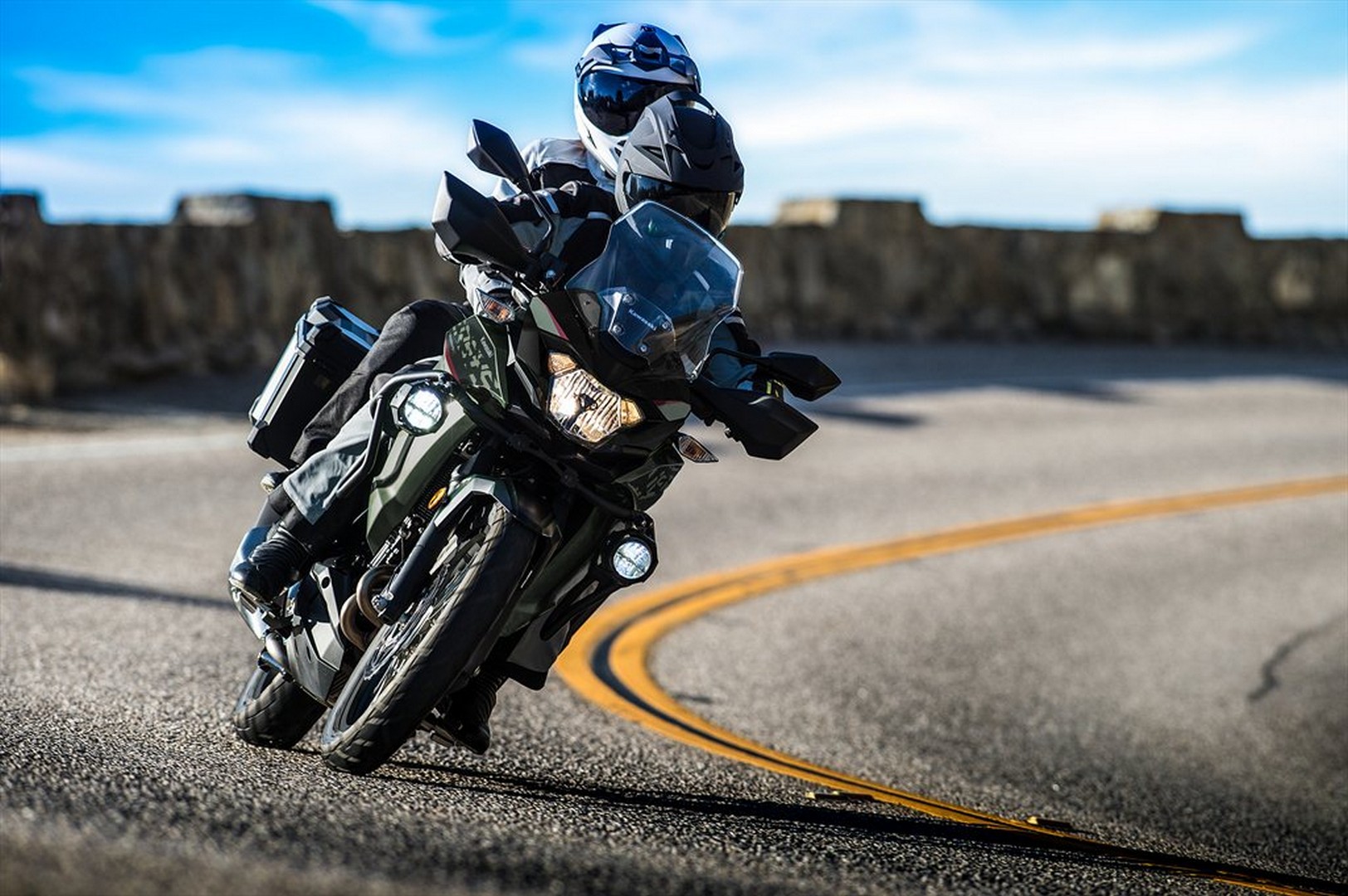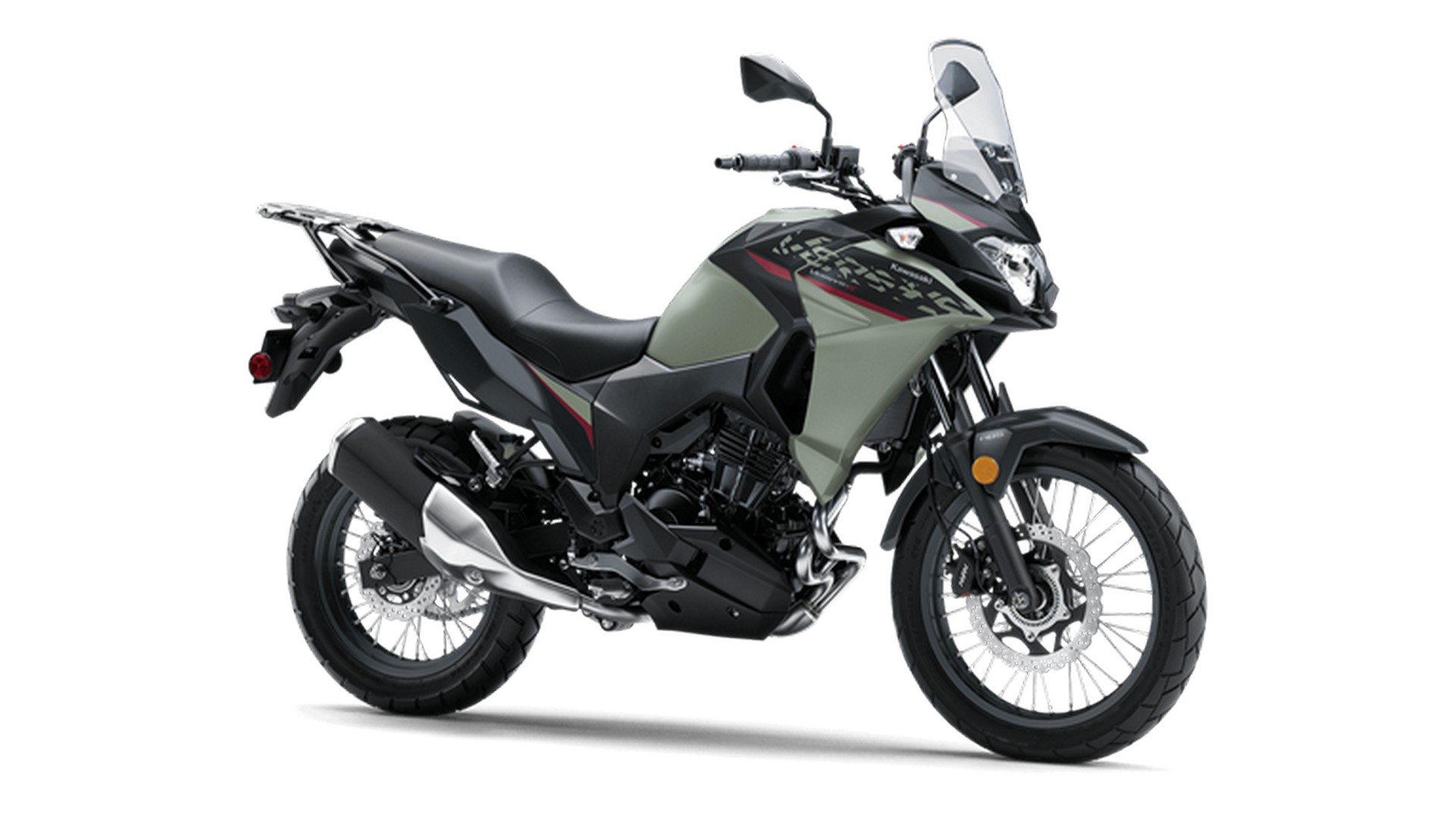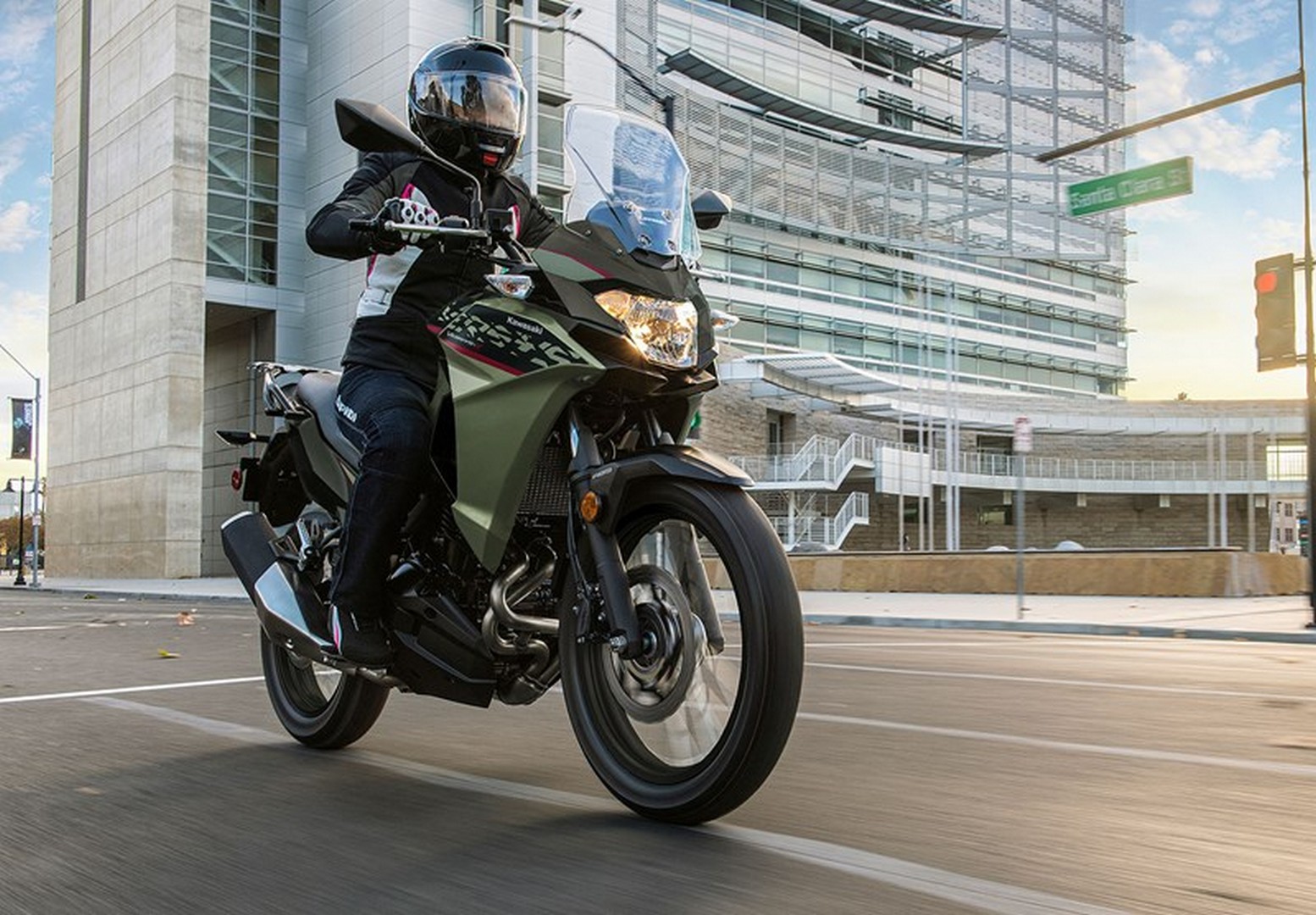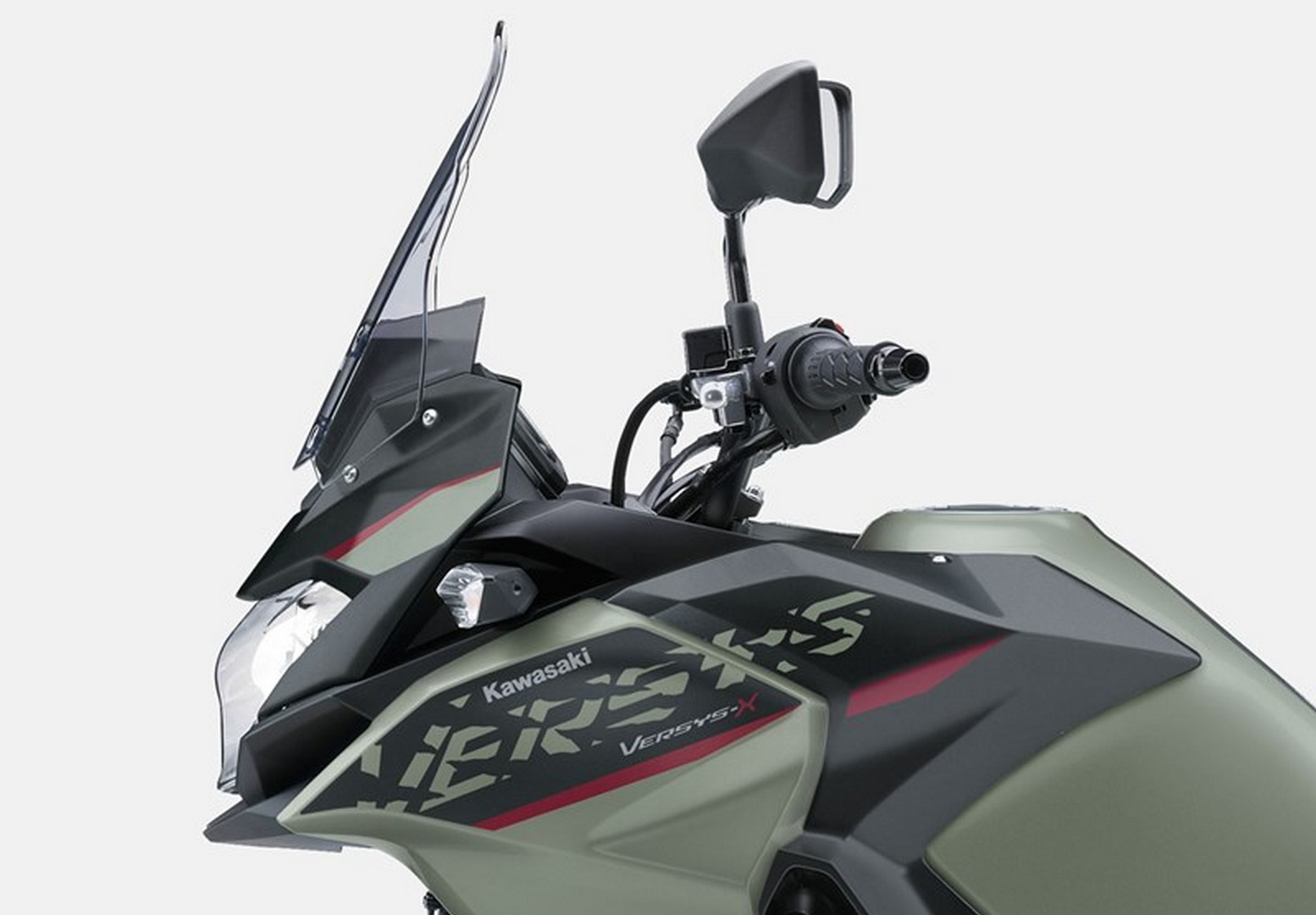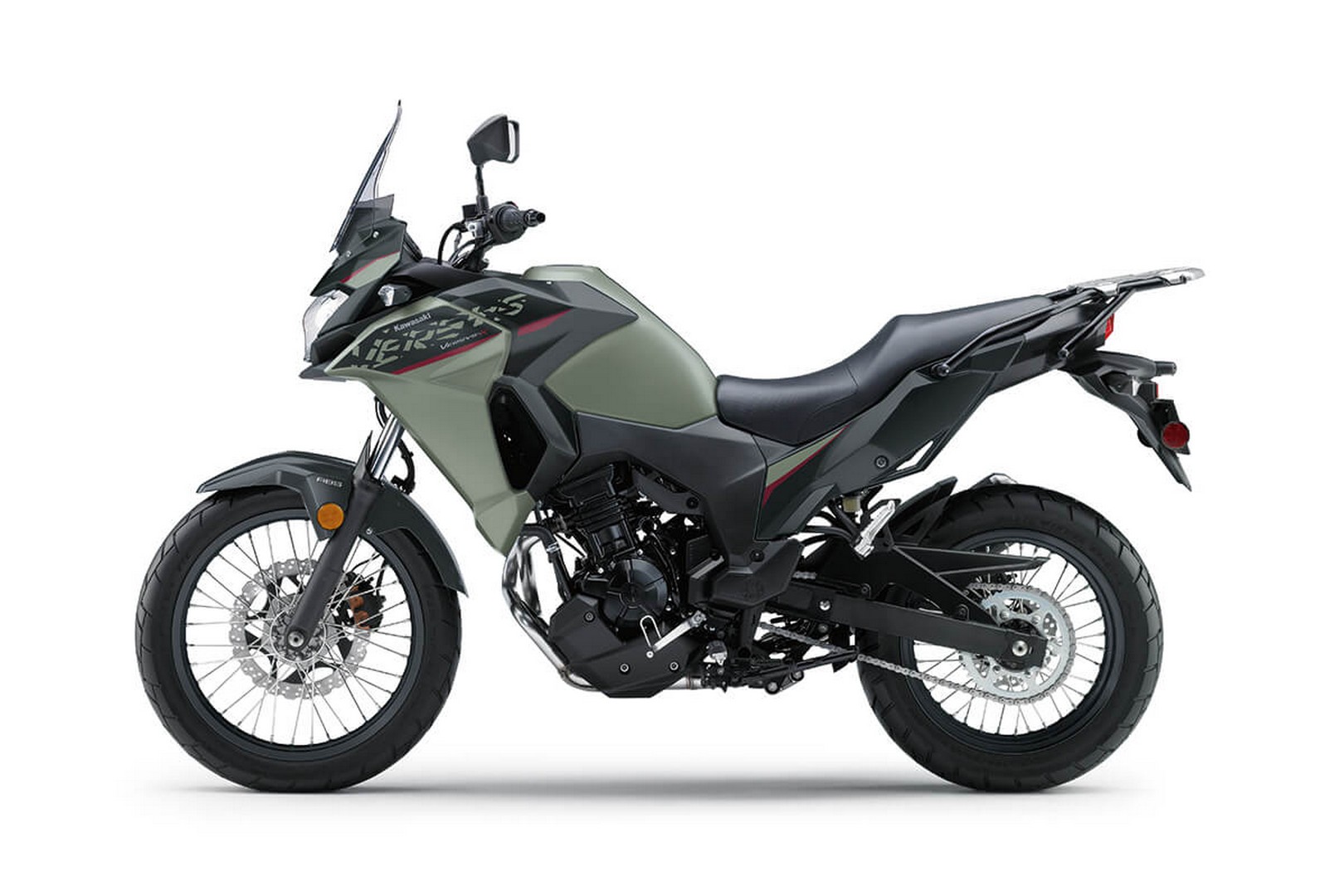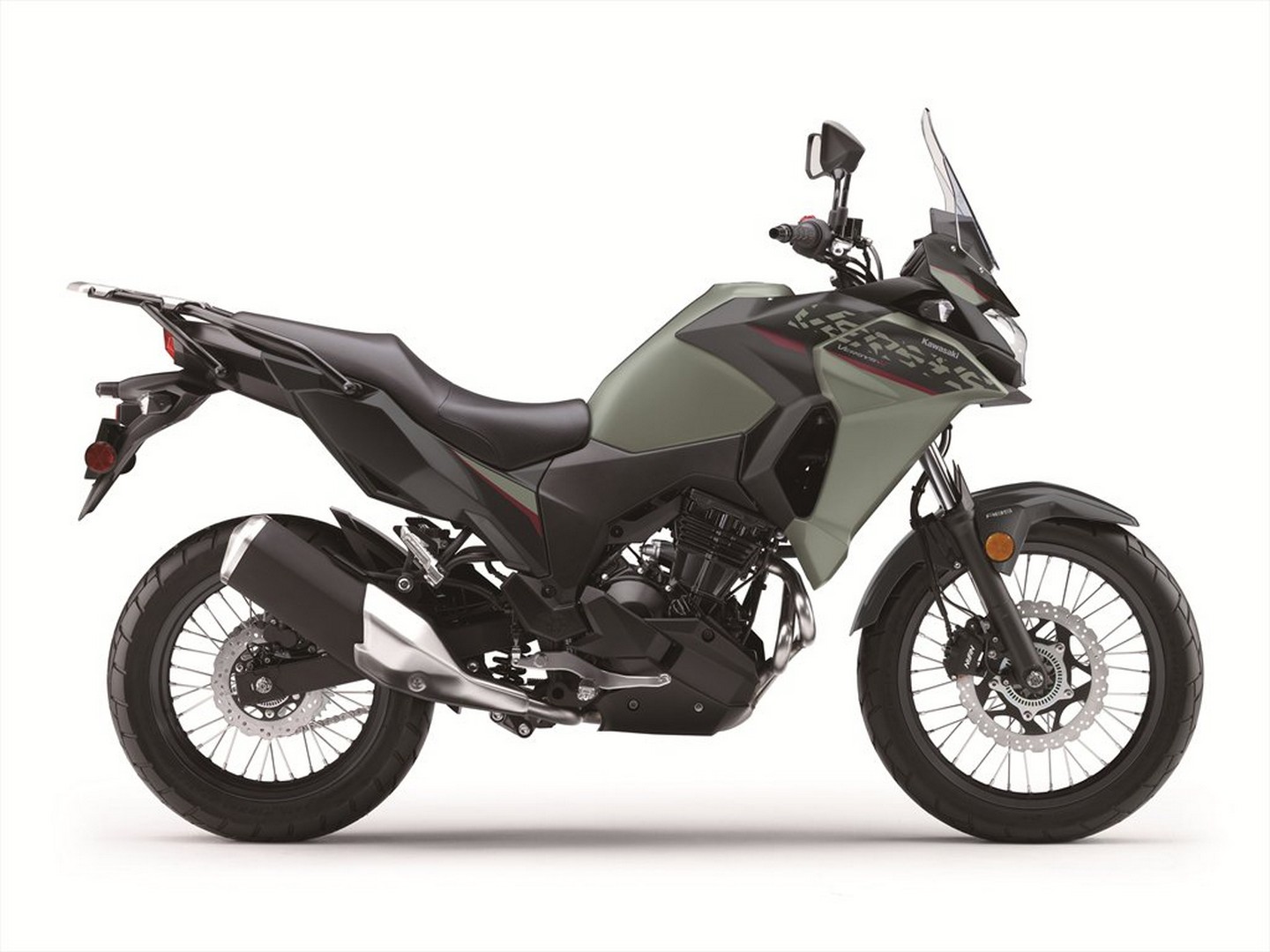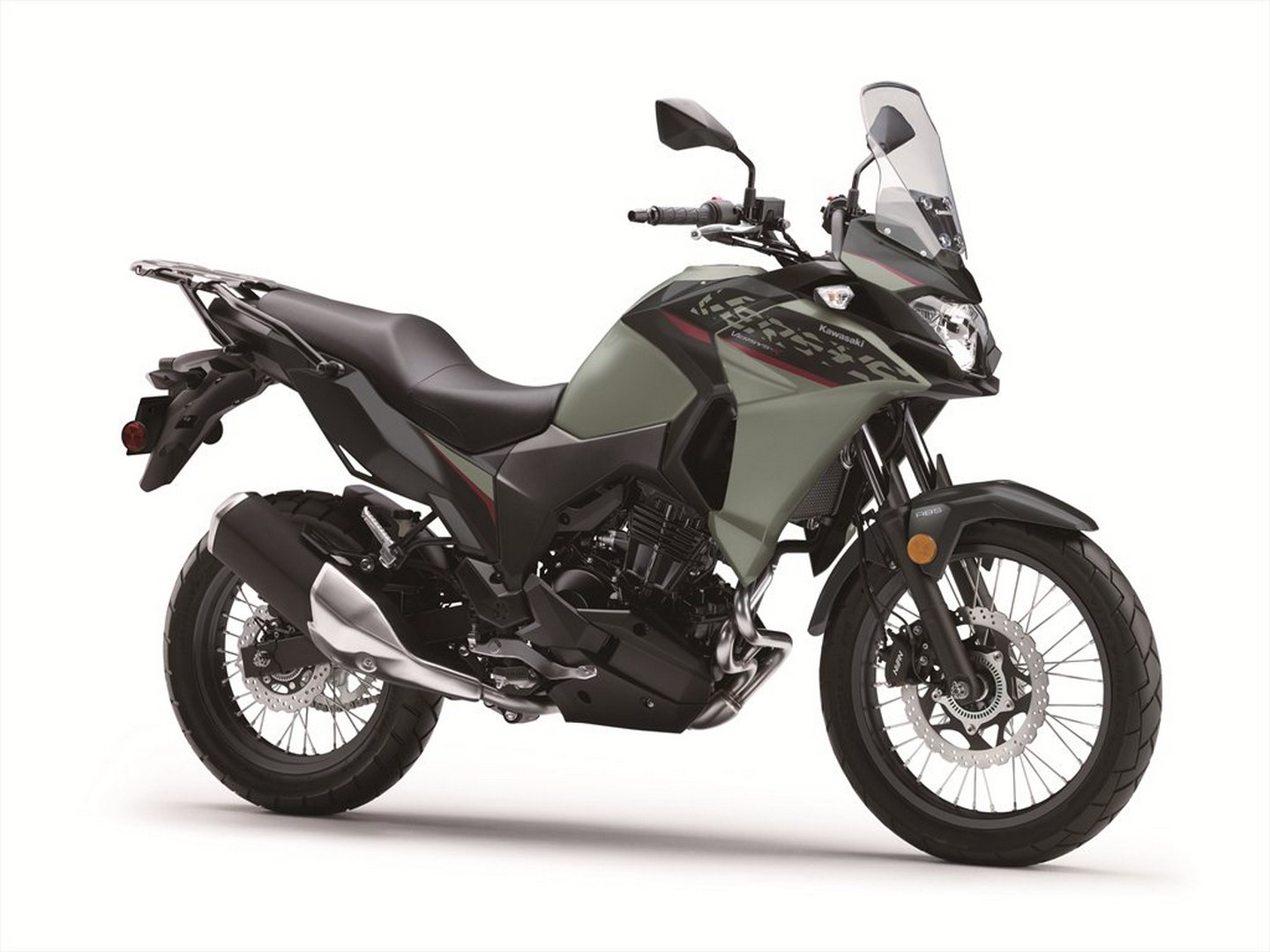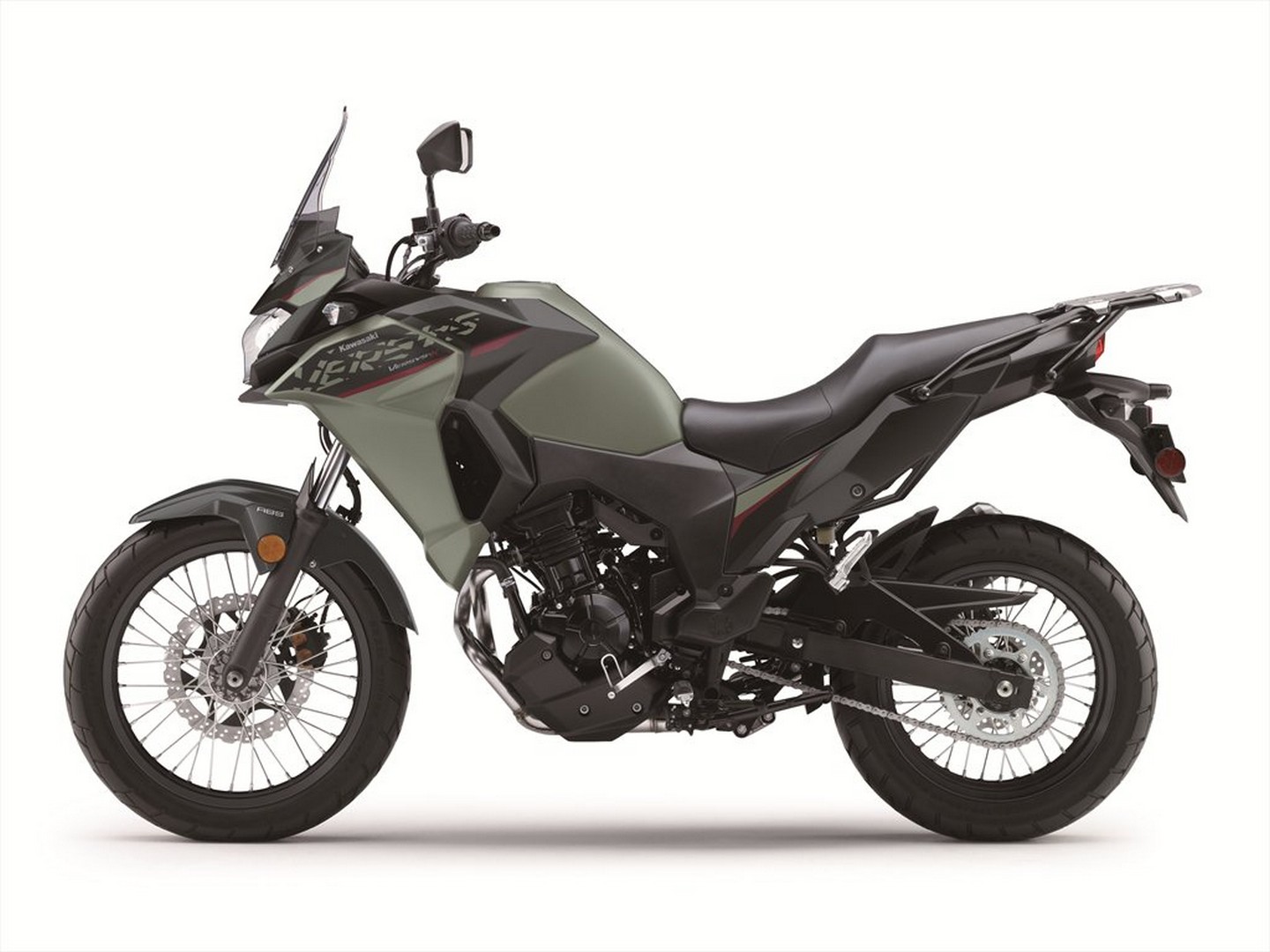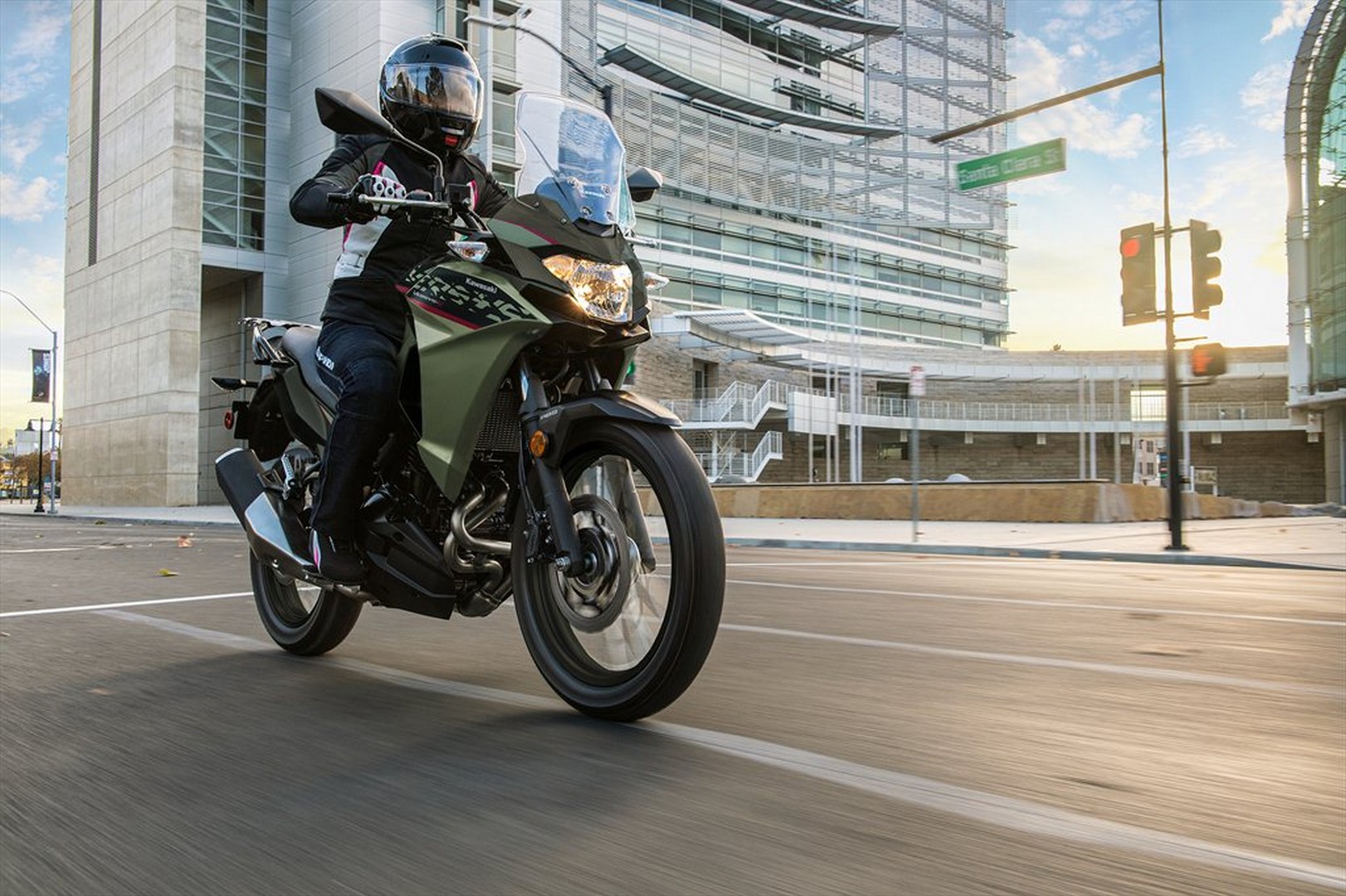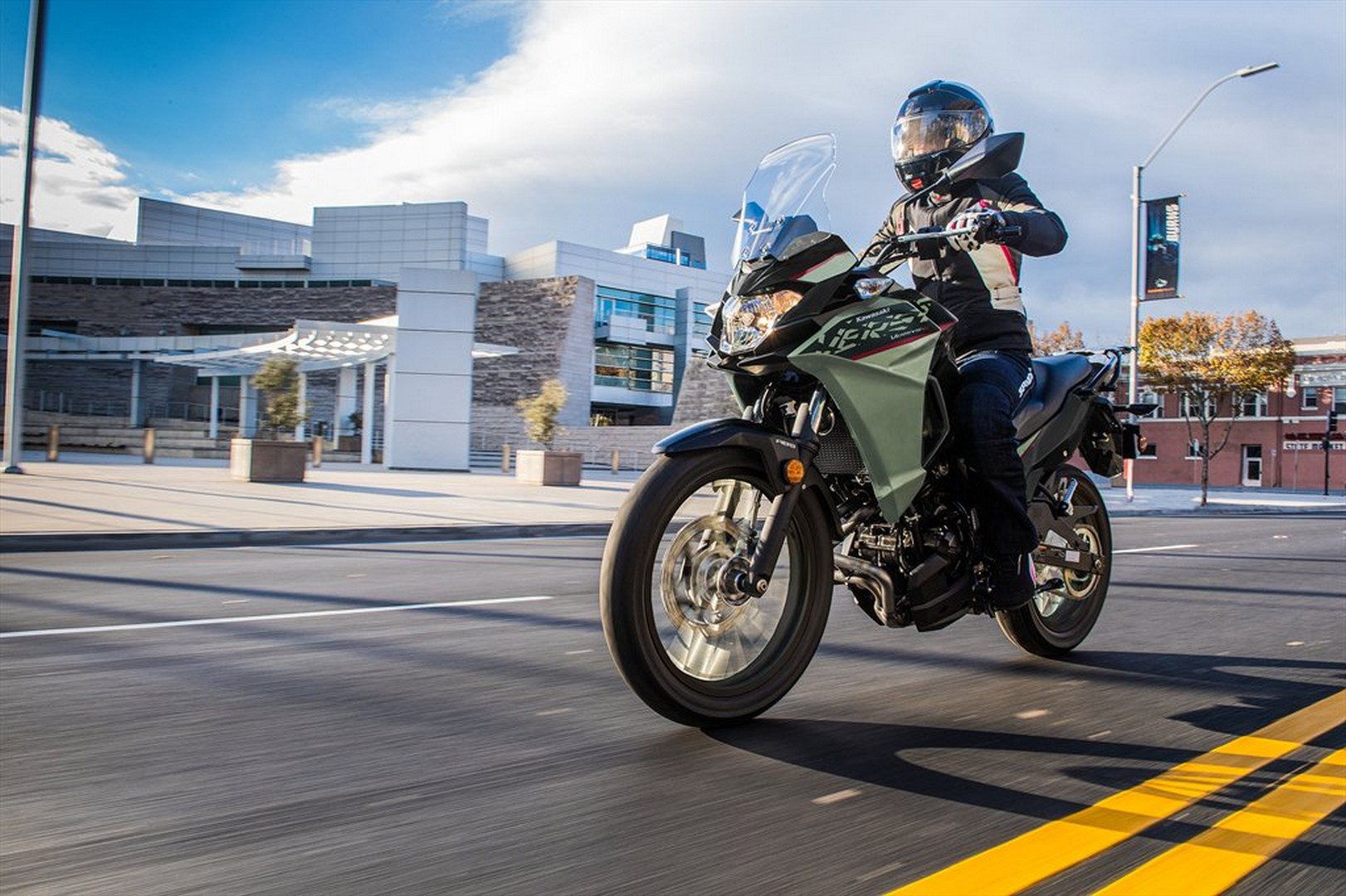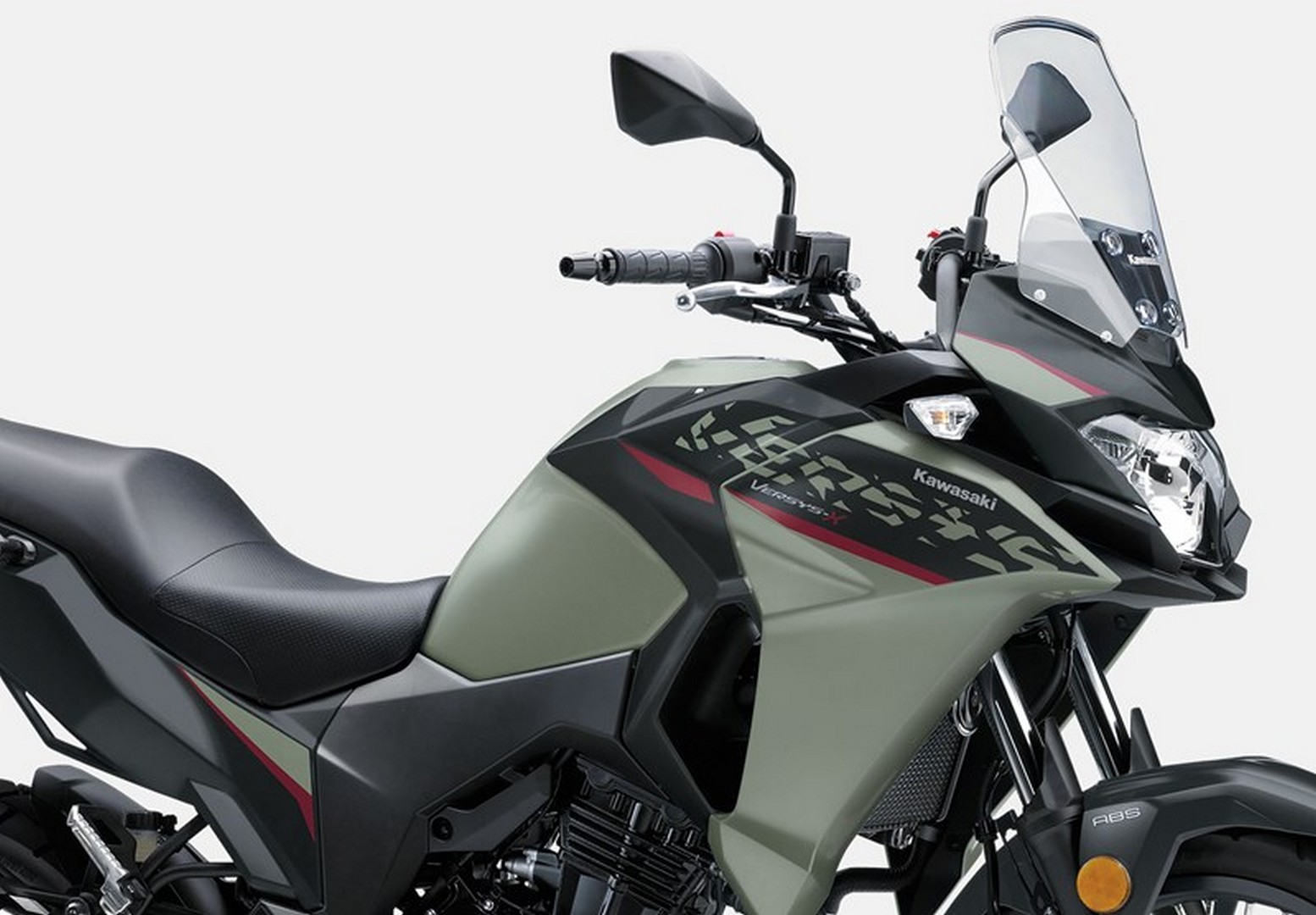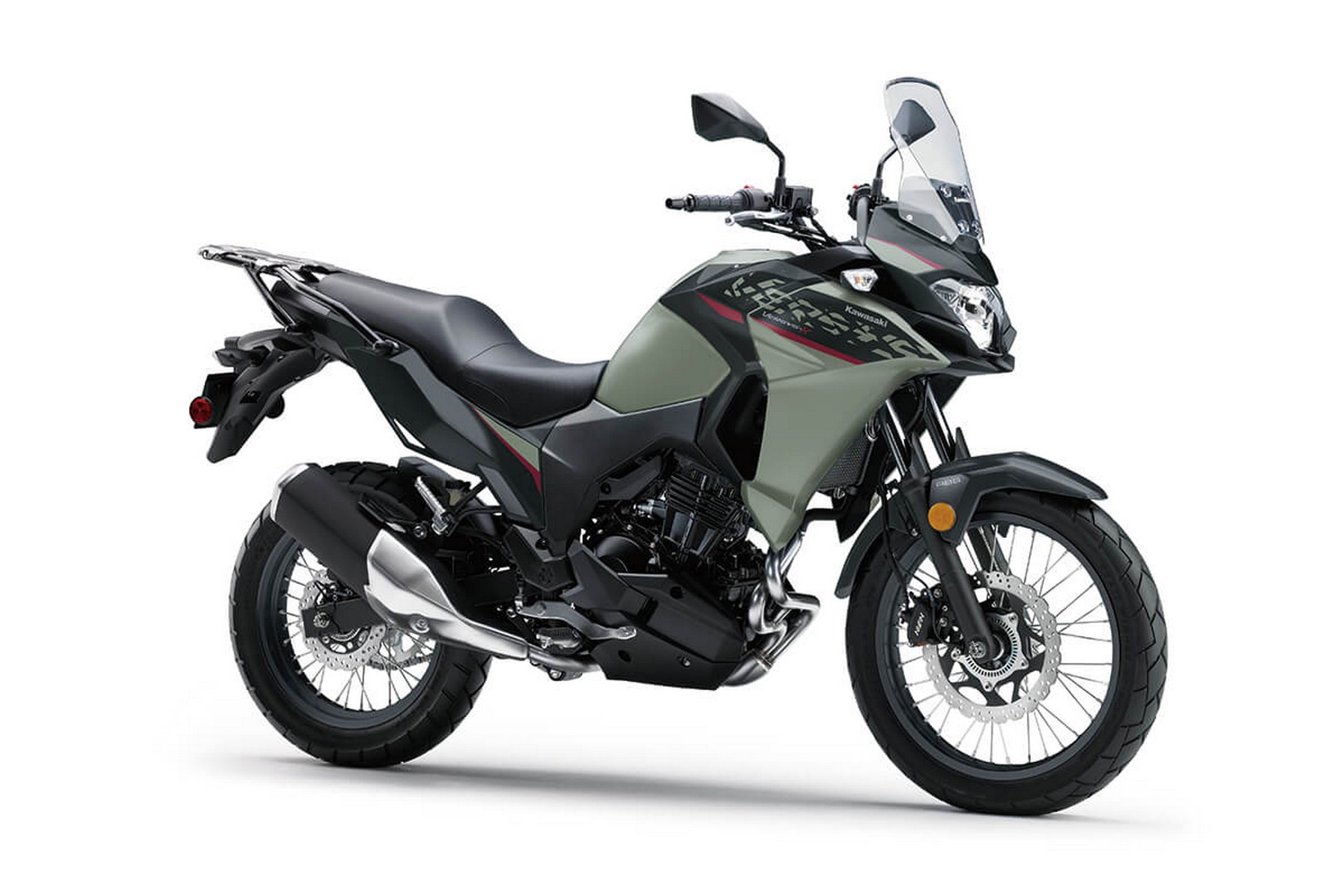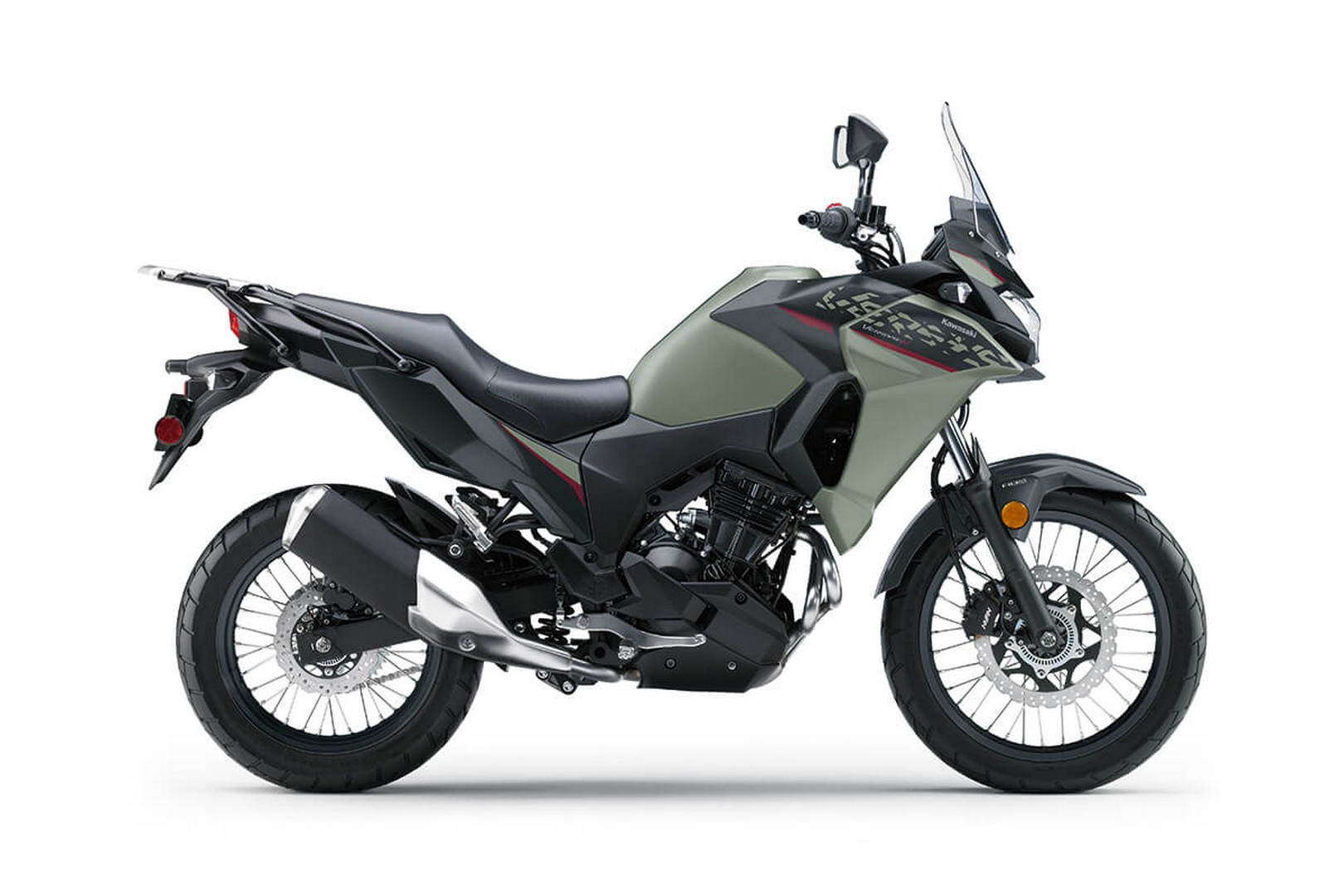The 2023 Kawasaki Versys-X 300: A Versatile Adventure Touring Motorcycle
Contents
The 2023 Kawasaki Versys-X 300 is the smallest displacement in Kawasaki’s Versys line of motorcycles. It’s built for riders who want a versatile and agile machine that can handle any road condition, from the city streets to off-road trails. With Kawasaki’s lightweight design, comfortable ergonomics, and advanced technology features, the Versys-X 300 is a great choice for both experienced and novice riders. The peppy liquid-cooled, 296cc engine smoothly delivers 39 horsepower and is responsive throughout the rev range.
The Versys-X 300 comes equipped with many of the technology features of other bikes in Kawsaki’s 2023 lineup that enhance its performance and safety. These features include an advanced digital instrument panel and ABS brakes (for an additional cost). The bike also has a tubular frame that provides excellent rigidity and stability, as well as a long-travel suspension system that absorbs bumps and vibrations for a smoother ride.
The Versys-X 300 also boasts a range of comfort and convenience features that make it a great choice for touring. The 300 has a comfortable and upright riding position that reduces fatigue and allows for better visibility, as well as a spacious and adjustable windscreen that provides protection from wind and weather. It also has ample storage space, with a large rear carrier that can accommodate a top case or other accessories. All these features combine to make it a contender amongst the Japanese brands.
The 2023 Kawasaki Versys-X 300 starts at $5,899 USD/$7,149 CAD
On this page: we’ve curated specs, features, news, photos/videos, etc. so you can read up on the new 2023 Kawasaki Versys-X 300 in one place.
Model Overview
General Info
- Price: $5,899 USD/$7,149 CAD
- Key Features:
-
- Front Cowling with tall windshield
- Convenient rear carrier
- Long-Travel suspension
- Lightweight and spoked wheels
Main Specs
- Engine: 296cc 4-stroke, 2-cylinder, DOHC, liquid-cooled
- Power: 39 horsepower
- Torque: 18.5 lb-ft
- Weight: 381 lbs (172 kgs)
- Seat Height: 32.1 inches (815 mm)
Competitors
2023 Kawasaki Versys-X 300 Specifications
ENGINE |
||
| Engine | 296cc, liquid-cooled, 4-stroke, DOHC 8-valve parallel twin | |
| Power | 39 Hp | |
| Bore x Stroke | 62.0 x 49.0mm | |
| Compression Ratio |
10.6:1
|
|
| Fuel System | Fuel injection: ø32 mm x 2 with dual throttle valves | |
| Starter | Electric | |
| Lubrication | Forced lubrication, wet sump | |
DRIVETRAIN |
||
| Clutch | Wet multi-disc, manual | |
| Transmission | 6-speed, return shift | |
| Final Drive | Chain | |
CHASSIS |
||
| Suspension Front | ø41 mm telescopic fork / 130 mm (5.1 in) | |
| Suspension Rear | Bottom-Link Uni Trak, gas-charged shock with adjustable spring preload / 148 mm (5.8 in) | |
| Brakes Front | Single ø290 mm petal disc with balanced actuation dual-piston caliper | |
| Brakes Rear |
ø220 mm petal disc with dual-piston caliper
|
|
| Tires Front | 100/90-19M/C 57S | |
| Tires Rear | 130/80-17M/C 65S | |
| Fuel Tank Capacity | 17 litres | |
| Color |
Metallic Ocean Blue/Pearl Robotic White
|
|
ELECTRICAL |
||
| Ignition | TCBI with digital advance | |
| Spark Plugs | ||
| Headlight | LED | |
| Tail Light | LED | |
DIMENSIONS |
||
| Overall Length | 85.4 in | |
| Overall Width | 33.9 in | |
| Overall Height | 54.7 in | |
| Wheelbase | 57.1 in | |
| Ground Clearance | 7.1 in | |
| Seat Height | 32.1 in | |
| Curb Weight | 175 kg (386 lb) | |
WARRANTY |
||
| Warranty | 12 Months | |
| Kawasaki Protection Plus | 12/ 24 / 36 / 48 months | |
2023 Kawasaki Versys-X 300 Features
Assist & Slipper Clutch
Under normal operation, the assist cam functions as a self-servo mechanism, pulling the clutch hub and operating plate together to compress the clutch plates. This allows the total clutch spring load to be reduced, resulting in a lighter clutch lever feel when operating the clutch.
When excessive engine braking occurs – as a result of quick downshifts (or an accidental downshift) – the slipper cam comes into play, forcing the clutch hub and operating plate apart. This relieves pressure on the clutch plates to reduce back-torque and helps prevent the rear tire from hopping and skidding. This race-style function is particularly useful when sport or track riding.
Dual Throttle Valves
On models with dual throttle valves, there are two throttle valves per cylinder: in addition to the main valves, which are physically linked to the throttle grip and controlled by the rider, a second set of valves, opened and closed by the ECU, precisely regulates intake airflow to ensure a natural, linear response. With the air passing through the throttle bodies becoming smoother, combustion efficiency is improved and power is increased.
Economical Riding Indicator
While effective vehicle speed and engine speed may vary by model, paying attention to conditions that cause the “ECO” mark to appear can help riders improve their fuel efficiency – a handy way to increase cruising range. Further, keeping fuel consumption low also helps minimize negative impact on the environment.
ABS (Anti-lock Brake System)
ERGO-FIT
ERGO-FIT® is an interface system designed to allow riders to find their ideal riding position. Various points of the chassis interface (the handlebar, footpegs and seat, etc.) can be adjusted through a combination of interchangeable parts and parts with adjustable positions. This enables a wide range of riders to find a riding position that offers both comfort and control. Feeling at one with their machine, they will be able to experience how Kawasaki machines are fun and rewarding to ride.
*Adjustable parts and their range of adjustability vary by model.
2023 Kawasaki Versys-X 300 Photos
2023 Kawasaki Versys-X 300 Videos
2023 Kawasaki Versys-X 300 review by Peter Lowe one:
2023 Kawasaki Versys-X 300 Review by Each Adventure:
Links
Kawasaki Official Websites


